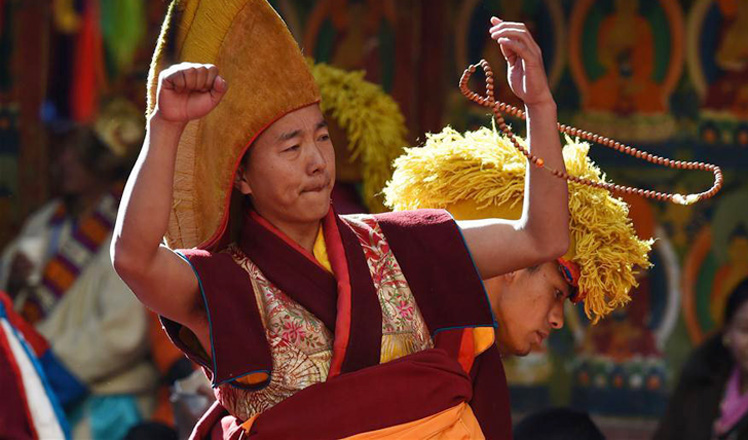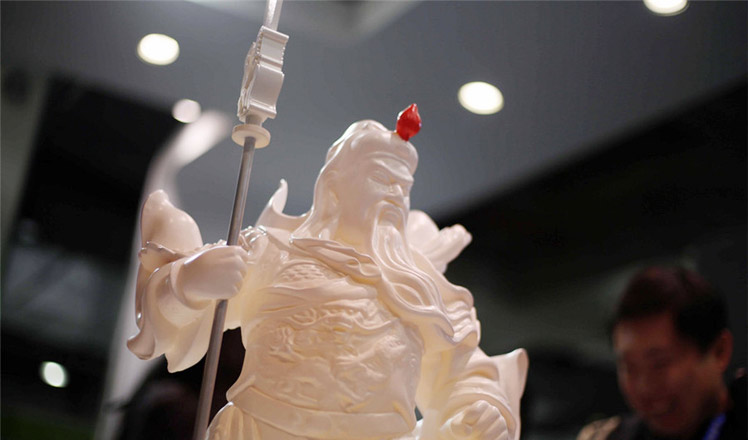Latest find confirms ownership of tomb
Updated: 2015-12-11 08:15
(Xinhua)
|
||||||||
 |
|
An archaeologist cleans the hoof-shaped ingots from the tomb of "Haihunhou" (Marquis of Haihun) that dates back to the Western Han Dynasty, in Nanchang, capital of East China's Jiangxi province, Nov 17, 2015. [Photo/Xinhua] |
Several ancient caldrons have been found in an ancient tomb, confirming the belief that it belonged to a deposed emperor from the Western Han Dynasty (206 BC-AD 24), archaeologists announced on Wednesday.
Nine ding, or ancient caldrons, were found during the latest excavation of the tomb of Haihunhou (Marquis of Haihun) in East China's Jiangxi province, said Yang Jun, who led the archaeological project.
"The number nine was only used by Chinese emperors in early feudal times, and it is common for tombs of emperors to be called nine-ding tombs," said Yang.
"Such traditions were relaxed before the Western Han Dynasty, but a set of caldrons is strong testament to the tomb owner's high status," he said.
Archaeologists believe the tomb belongs to Liu He, grandson of Emperor Wu. He was given the title Haihunhou after he was deposed after only 27 days as emperor.
Yang said the caldrons may have been used by the aristocracy to treat guests, as they were placed near other dinnerware, including a bronze liquor kettle and stoves. But others said the caldrons were commonly used for rituals.
The main coffin of the tomb will be opened next Saturday, said Yang.
The cemetery, the most complete known Western Han Dynasty cemetery, covers roughly 40,000 square meters and contains eight tombs.
- People exit rebel-held area in Syrian peace deal
- Two DPRK music groups to perform in China
- False bomb alert prompts security measures at Mexico City airport
- Russia fires missiles at IS positions
- US House passes bill to tighten visa waiver program
- Obama, Modi vow to secure 'strong' climate change agreement

 US returns 22 recovered Chinese artifacts
US returns 22 recovered Chinese artifacts
 AP photos of the year 2015
AP photos of the year 2015
 Miss World contestants visit welfare center in Hainan
Miss World contestants visit welfare center in Hainan
 Giant pandas brave the cold by settling in freezing north
Giant pandas brave the cold by settling in freezing north
 World Internet Conference host Wuzhen: Charming water town
World Internet Conference host Wuzhen: Charming water town
 7 half-pound mutts become first test-tube puppies in world
7 half-pound mutts become first test-tube puppies in world
 Panchen Lama enthronement 20th anniversary celebrated
Panchen Lama enthronement 20th anniversary celebrated
 Printer changes the chocolates into the 3rd dimension
Printer changes the chocolates into the 3rd dimension
Most Viewed
Editor's Picks

|

|

|

|

|

|
Today's Top News
Shooting rampage at US social services agency leaves 14 dead
Chinese bargain hunters are changing the retail game
Chinese president arrives in Turkey for G20 summit
Islamic State claims responsibility for Paris attacks
Obama, Netanyahu at White House seek to mend US-Israel ties
China, not Canada, is top US trade partner
Tu first Chinese to win Nobel Prize in Medicine
Huntsman says Sino-US relationship needs common goals
US Weekly

|

|







